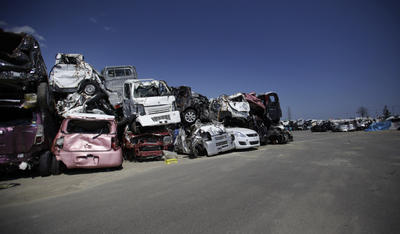There were two interpretations of Japan’s predicament.
The first was that it marked the end of Japan’s golden age in the second half of the twentieth century. China had overtaken Japan as the second largest economy in the world; Japan faced huge demographic challenges; confidence in the political capacity to deal with mounting government debt had collapsed.
The alternative view was that, phoenix like, Japan would resurrect itself from crisis. Historically, events like modernisation during the late 19th Century, the rebuilding following the 1923 Great Kanto earthquake and its 140,000 deaths, and reconstruction after World War II were cited as precedents.
Immediately after the disaster, I thought a third way more likely. Just as the 1995 Kobe earthquake did not signal a massive shift in Japan, it seemed unlikely that the Sendai disaster would either. Indeed, given the political, economic and social upheaval in 1995, what is surprising is how ‘normal’ everything seemed in 1996 with the LDP back in power, economic stagnation unresolved, and the Aum terrorists in jail. Tragic beyond belief though the Sendai disaster had been, it was not a likely harbinger to a radically different Japan.
This sanguine view underestimated, I confess, the impact of the stress on the population of Tokyo of living with the constant threat of nuclear irradiation, and the recurring aftershocks from the Sendai quake. While the natural disasters of the earthquake and tsunami may not have changed much in Japan, the unfolding man-made disaster of Fukushima could yet have lasting effects on the Japanese people’s attitudes towards the costs of development, the environment and the political affairs.
Three months on, my contrarian view that, beyond the immediate impact of the human tragedy, the triple disaster changes little of Japan as we know it. The strength of cultural tradition and embedded institutions hold strong against shocks of nature and technological failure.
What evidence is there to sustain this view?
The recent victory of the pro-nuclear candidate in the election for the Aomori governorship, with 75 per cent of the vote, is one bit of evidence. The tragedy has receded from world headlines around the world. The economic and social effects of the disaster are confined narrowly to the Pacific Tohoku region and northern Tokyo. And most significantly, there has been a return to ‘normal’ national politics with prime minister Kan running the gauntlet of a no confidence motion, his unresolved future, Ozawa’s re-emergence, and talk of an LDP return with a ‘grand coalition’.
This is not a message of pessimism. It’s an optimistic story. It puts the impact of the disaster in its local perspective. It rates highly the capacity of Japan, above almost any country in the world, in managing the response to a 9.0 magnitude earthquake and 10 meter tsunami, with only one major technology crisis — at Fukushima. It’s hard to think of another society with such resilience and ability to respond so quickly and effectively to these problems.
The doomsday prognosis of natural disasters is not only hogwash; it encourages the irrational and extremists such as the Aum cult to justify antisocial behaviour.
Japan’s disaster of 11 March is hardly a 9-11 moment. It saw a huge and tragic loss of life. But above all it is a testament to the fortitude of Japanese institutions and traditions, Japan’s willingness to invest in preparation for these national emergencies and a witness to Japanese society’s resilience in the face of nature’s awesome power.
Kent Anderson is Director of the School of Culture, Language and History in the College of Asia and the Pacific at the ANU. This essay appears in the Nihon Keizai Shimbun (Nikkei) today.

